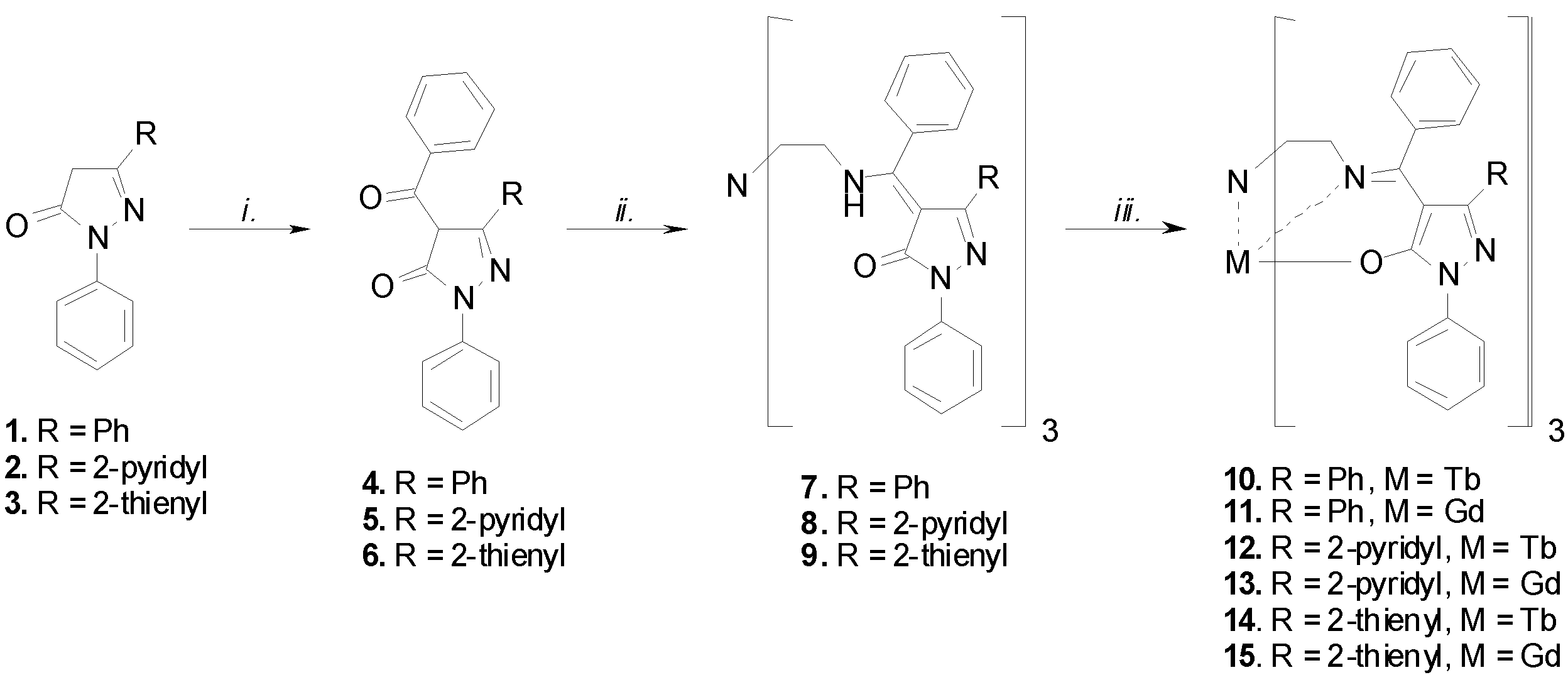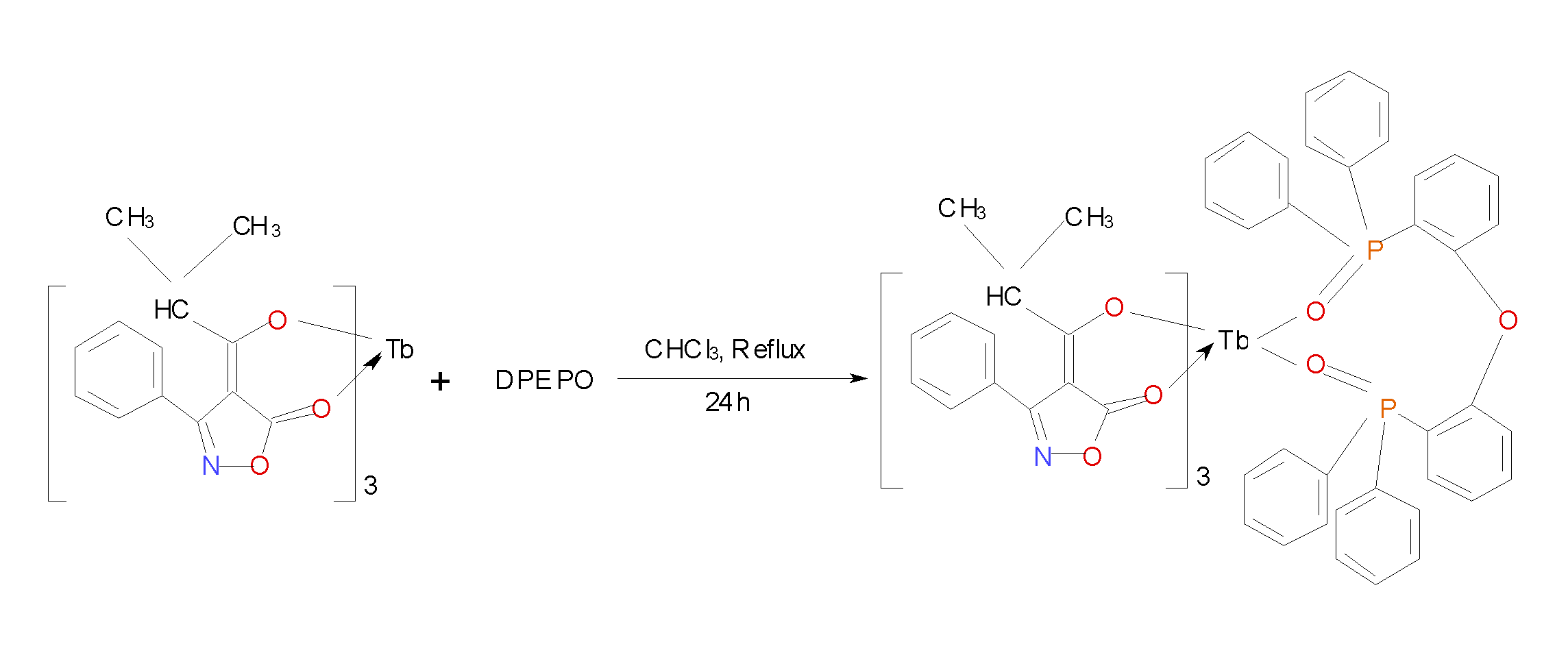Photochemistry and Spectroscopy Department
Institute of Physical Chemistry, Polish Academy of Sciences
New luminophores designed in three main classes:
Lanthanide photoluminescent complexes are designed for the applications as materials for OLED devices, and biomedical markers. In this respect, Eu(III) and Tb(III) complexes are considered. Several groups of ligands have been studied, as sensitizers for efficient photoluminescent lanthanide complexes: tetraphenylimidodiphosphinate, pyrazolonates, oxazolonates, heteroaromatic tetrazoles.
Tetraphenylimidodiphosphinate (Htpip) itself is not particularly effective ligand for Ln(III) sensitization, due to its high triplet state. It forms much stronger complexes with lanthanide ions than analogous 1,3-diketonates. We discovered that six-coordination sphere in Ln(tpip)3 can be complemented with planar, bidentate ligands, such as phenanthroline. These ternary complexes display particularly high photoluminescence quantum yields in the range of 50-70%. Thus, such complexes might be of interest as photonic materials. An example of ternary complex is shown below:
Eu(tpip)3phen complex and Eu(tpip)3
Pyrazolonates and oxazolonates:
This class of ligands resembles the 1,3-diketonates, but offers more stable lanthanide complexes, and less susceptible for air oxidation and photodegradation. Two figures illustrate this class of compounds studied in our group:


A variety of combinations can be obtained with different substituents attached to pyrazolone, or oxazolone rings, however, the strongest impact on photoluminescence quantum yields is the formation of ternary complexes with elaborated phosphine oxides, as illustrated above.
Heteroaromatic tetrazoles:
Tetrazoles are weak acids. Proton on nitrogen can dissociate, as in case of carboxylic acids. We found that heteroaromatic tetrazoles form stable and photoluminescent complexes with Tb(III) and Eu(III) cations of 1:3 stoichiometry.


Their photoluminescence quantum yields can be still enhanced by co-complexation with auxiliary ligands, such as phosphine oxides. In some cases their PL quantum yield exceeded 70% for Eu(III) ternary complexes.
Organic ambipolar molecules of “star-shaped” topology are designed for superior photoluminescent properties to be useful in medical diagnostics as sensing probes, in chemical sensing devices and as prospecting OLED materials. Our group focused on organic materials incorporating truxene scaffold.
trithiatruxene trioxatruxene triboratruxene spirotruxene
This class of compounds is particularly challenging in their synthesis, but these compounds are superior in their photoluminescent properties while compared to “monomer” parts: fluorene, dibenzothiophene, dibenzofurane, etc. The truxene framework opens also possibility to introduce substituents on peripheries in order to tune the photoluminescent properties.
Of particular interest and importance was a discovery of a novel class highly photoluminescent ambipolar truxenes with separated electron Donor-Acceptor units. These compounds, developed by our PhD student, Michał Maciejczyk, turned out to be particularly effective electroemitters that display a high potential as efficient OLED materials:
Electroluminescence images: in cooperation with our partner: Prof. Ifor D. W. Samuel, of St Andrews University, Scotland